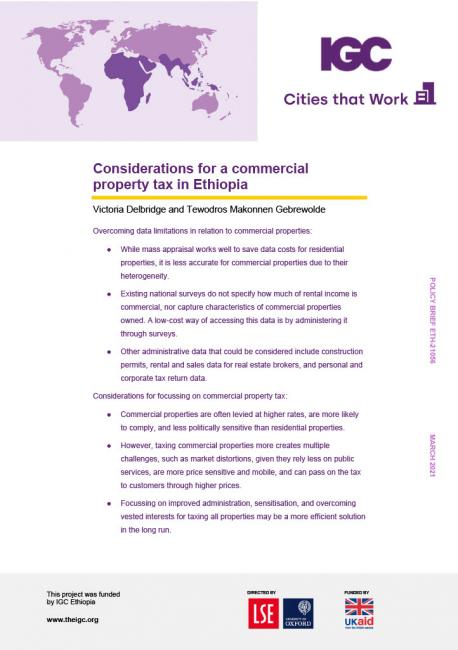Property taxes for urban development: A micro-simulation analysis for Ethiopia
Property tax has been a relatively under-utilised source of urban finance in developing countries. This is especially pronounced in rapidly urbanising regions such as Africa and Asia. The United Nations Economic Commission for Africa reports that Africa’s urban population has reached 40 percent of the total in 2014 and is expected to reach 56 percent in 2050. This presents an opportunity to raise bigger urban revenue along with the responsibility to provide urban services to an increasing urban population.
Ethiopia’s urbanisation has also been rapid in the past few years. Between 2000 and 2010 Addis Ababa has expanded by more than 9000 hectares according to the Atlas of Urban Expansion. In addition, the value added in construction has increased from 3 percent of the GDP in 2003 to 16 percent in 2017 according to the Ministry of Finance and Economic Cooperation figures. This has meant a rapid expansion in the building of infrastructure, residential and commercial buildings. Both the quality and the stock of buildings has rapidly increased.
This presents a big opportunity to modernise property tax systems as a potential to raise revenue and deliver better urban services. This can be used as a sustainable source of finance in a country where land is owned by the government and property accounts for a large investment. The current property tax system, known as ‘roof tax’ or ‘city house tax’, is outdated with very low unitary rates and poor enforcement mechanisms. The Ministry of Urban Development and Construction established a project office to modernise property taxes. With a lack of empirical research in this area, there is interest from this office in a research project on different valuation methods and rates.
This project aims to inform the process by synthesising existing knowledge and experience from peer countries. It also aims to conduct a simulation exercise to look at the potential revenue and distributional impacts of different property tax modalities or scenarios.




